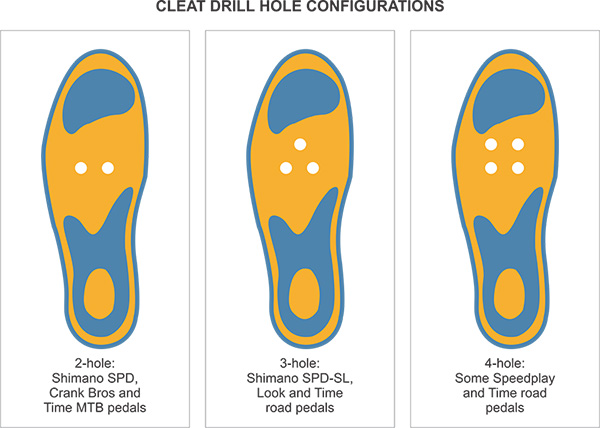Cycling shoes are one of the most complicated athletic footwear out there. Buying the right cycling shoes is a tricky task today and you should know your usage very well. The market is coming up with new shoe technology everyday and the internet confuses the buyer with contradicting information on what to buy. So a buyer needs to be properly informed for making the right selection.
The main categories are Road Shoes and Mountain Shoes. Also, the intensity of usage that whether it is for casual, short commutes or a road-racing or a triathlon racing also matters. Key features include rigidity—for more transfer of power from cyclist to the pedal; weight, a method of attaching the shoe firmly to the pedal and adaptability for on and off the bike.
World Of Wheelz offers a wide range of international quality cycling shoes in India ranging from flat pedal to leisure to MTB/XC and road shoes to suit your need.
The main points to be considered are–
Bike Shoe And Pedal Cleat Compatibility
This compatibility is very important for a biker to have full control while pedalling. There are both clip-in and clip-less technology to connect cycling shoes to the pedal. Holes drilled in the soles attach to the cleat in the pedal to create a secure connection.
‘It is very important to understand and note that cleats are part of the pedal and not the shoes and one has to carefully buy compatible shoes.’
There are 2 bolt, 3 bolt and 4 bolt cleats. Some bike shoes are drilled to accept both 3- and 2-hole cleat designs, but most will accept only one or the other. The 4-hole pedal system with the help of an adapter kit can be adapted to fit many shoe styles.
The 2-hole system can be used for all types of riding, including mountain biking, road cycling, touring and commuting. The 3-hole system is most often used for road cycling, as it offers stability and energy transfer while riding the cycle. The large cleat spreads the force which is applied to the pedal over a wide area. As a result, it reduces pressure on the connection points and allows a secure connection when you’re pedalling harder.

Shoe Closure System
The shoe closure system is very important to keep your feet snug and comfortable and allow you to adjust the fit as you ride, and help you transfer power more efficiently. With that said, there are four main types of closure systems: BOA, Straps with Buckle, Velcro/Rip and Stick strap, and laces/Classics. What you’ll need will depend on your intended cycling requirement.
BOA– This is a dial system that can evenly distribute pressure across the top of shoes. Its mechanical reels ensure a snug fit. The most expensive closure system available, BOA lacing is most commonly found on competitive cycling shoes and are very lightweight.
Straps with Buckle – This is expensive than the Velcro option. They are most often found on road cycling shoes.
Velcro/Rip and Stick straps – One of the quickest and easiest ways to open and close a shoe. They cost less and are mostly used on road and triathlon cycling shoes.
Lace/Classics – The cheapest, most comfortable and customized fit.
Sole Of The Shoe
There are various kind of soles ranging from nylon, carbon reinforced nylon and carbon. The stiffer the sole, the better the performance as the feet does not flex much and can transfer more power to the pedals. Carbon soles tend to be the most expensive once but are stiff and lightweight and are mostly used by an advanced cyclist.
Biking Shoe Fit/Sizing
The fit has to be perfectly snug, to begin with as they are not the regular shoes and have stiff soles. There should be enough space to move the toes, ideally, 3-4mm space should be left in the front. The ball of the foot should not feel any pressure on standing. In case of feeling a slippage try a smaller size or another company.
Bike Shoe Care and Maintenance
Clean and dry your bike shoes with a towel or a rag. Shoe dryers are also available in the market. It is very important to wipe off stubborn dust from the shoes for high durability.
You need to replace your cleats when they start disengaging from the pedal themselves. Depending upon your usage a cleat can be used from one to five years.

